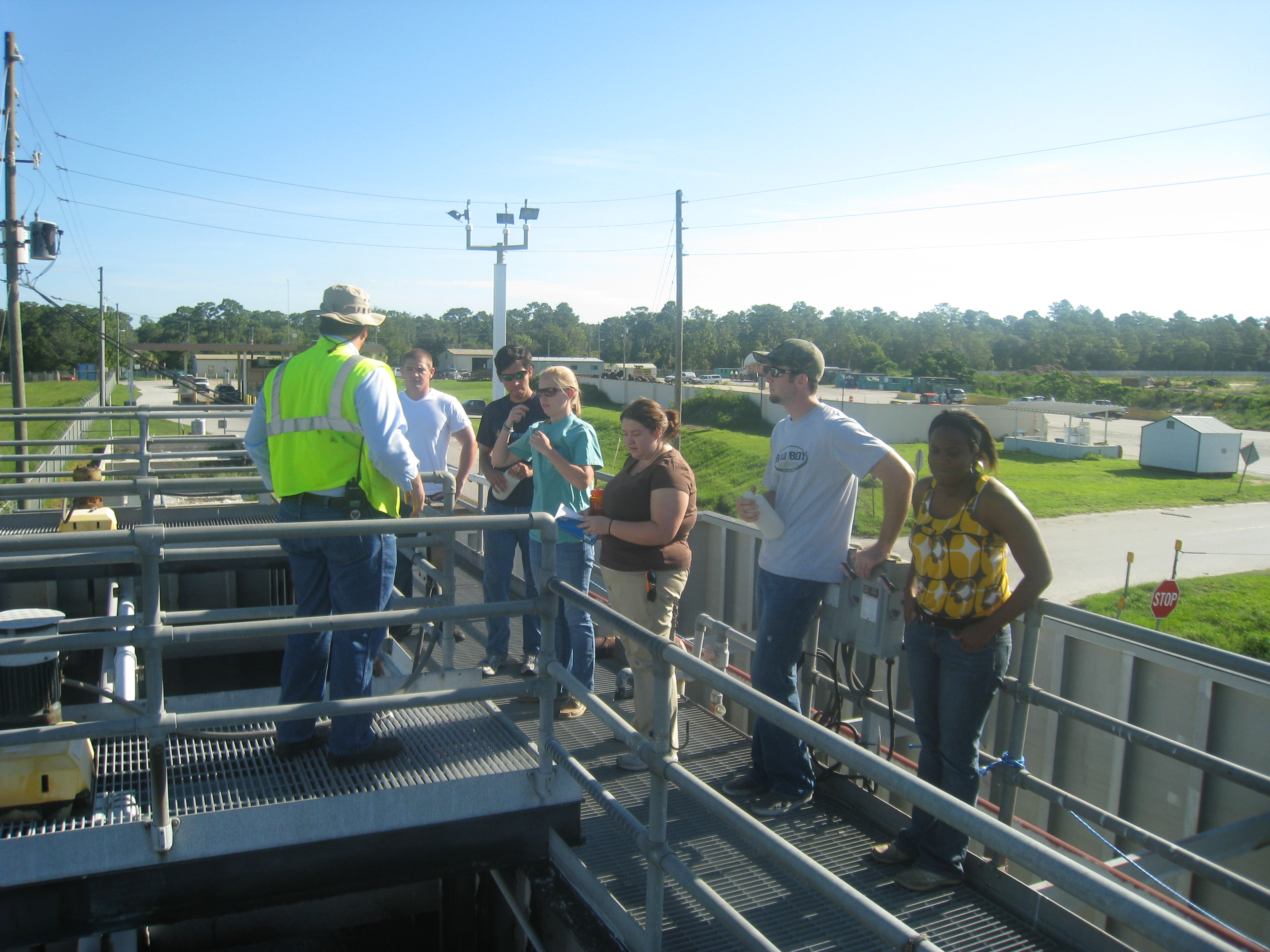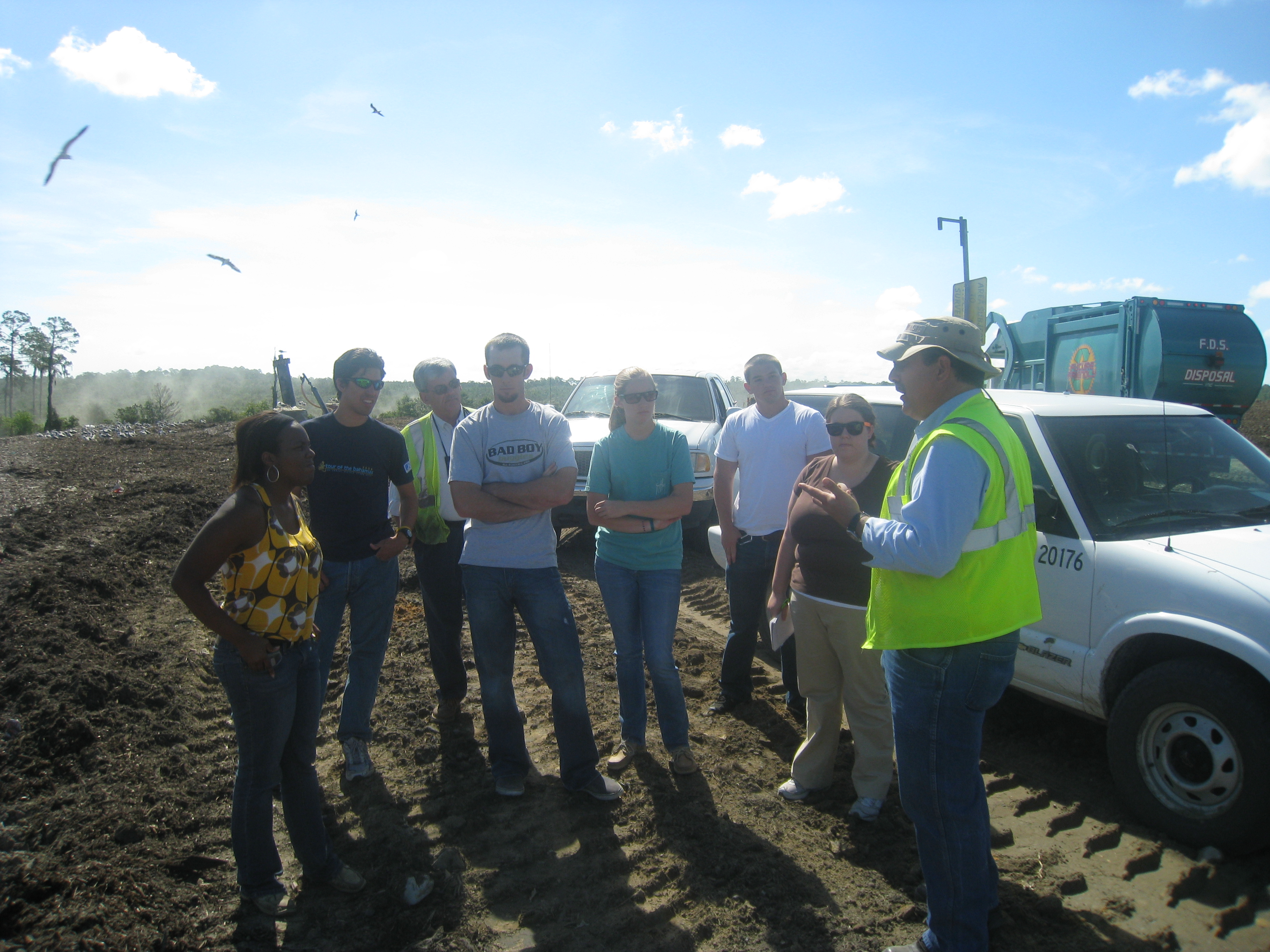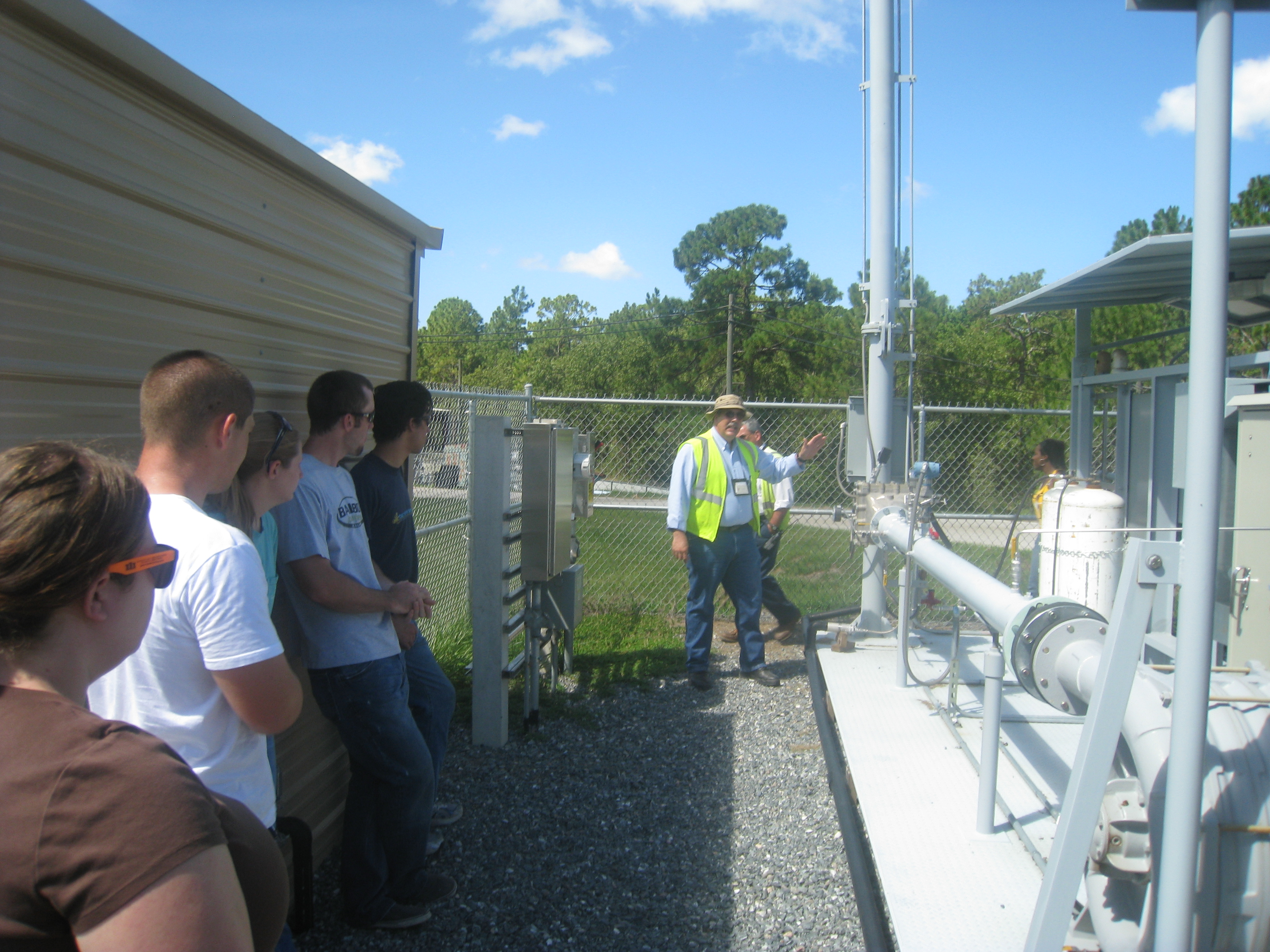Citrus County Landfill

On Tuesday July 19, 2011, we visited the Citrus County Landfill. This was an active landfill site and small wastewater treatment site to process landfill leachate. There is a closed landfill cell that was open from 1974 to about 1990, and is now being used as a gun range while leachate production is still monitored. The entire site is surrounded by state parks. There are often animals inside the landfill site or along the boundary. In addition to seagulls looking for food, there are a few bald eagles and a colony of scrub jays along one of the fence lines. While it is a public landfill, residents must either bring in their trash themselves, or pay an outside company to haul it to the landfill.
The landfill has lists of prohibited and restricted items and has certified spotters on top of the open face of the landfill at all times that garbage is being dumped to monitor for these items. These items include, but are not limited to, batteries and tires. Prohibited items must instead either be recycled (tires) or taken to the hazardous waste facility (batteries). Sixty percent of the waste taken to the hazardous waste center is latex paint. Residents can bring traditional recyclables, like glass, aluminum, and plastics, to the center, separate each type, and then place into the appropriate bins for recycling. However, the center also collects other items for recycling: tires, appliances, CFL lightbulbs, and styrofoam. The plant has a Styrofoam recycling machine that was given to them by Polk County and can recycle clean, uncontaminated Styrofoam packing pieces into a solid, dense piece of polystyrene that can then be sold back. This machine, with labor costs and electricity included, does not pay for itself, but the center likes to use it for educational purposes. Yard waste is also collected and then ground into coarse mulch and finer mulch that looks more like compost. This is then made available to the public for free.

The landfill processes about 300 tons a day total of residential waste. It has a side slope of 3:1, keeping it steep, but not so steep the garbage will roll down off the open face. Instead of 6 inches of soil added to the top of the garbage every day, the Citrus County landfill uses an alternate daily cover spray that is only about ¼ inch thick. This alternate daily cover (ADC) saves the landfill space every day, so that more garbage fits into the landfill in the space available. A new garbage cell is opening at the landfill. It has a liner with double leachate collection, 2 feet of selective filter between the liner and the trash, and a thin clay liner instead of 6 inches of clay. Two feet of soft garbage, or basic residential waste, will go into the bottom of the new cell so that none of the liners are punctured or damaged by the first layer of garbage. All rebar, lumber, and steel will be put into the current cell while the new cell is being opened. When the current cell is full, the top liner will be welded to underlying layer and the cell will be covered and then monitored for leachate and landfill gas for at least 30 years.
Water management at the landfill is crucial. It costs the plant 4 cents per gallon to treat the leachate, so an increase in leachate increases the costs of the landfill. Rainwater must be managed and contained; any water the hits the open face of the landfill is automatically categorized as leachate and must be pumped to the water treatment area. The operators try to keep the working face, the area where the garbage is dumped, as small as possible to prevent this problem.
Landfill gas is also pumped out of the landfill through an infrastructure of piping to a flare on the premises. The gas is currently being burned; however, the landfill is trying to obtain carbon credits and/or sell the gas somehow. If any leachate or rainwater were sucked into the flare with the gas, it would be disastrous, so several fail-safes have been built into the flare design.
Overall, the landfill has a lot more going on there than just garbage collection. There is a large recycling program, a leachate wastewater treatment facility, and a gas flare, in addition to the actual landfill. They have the potential to sell carbon credits and gain revenue by selling their landfill gas to a power company, as well as, hopefully, gaining some revenue from all the recycling done. It was interesting to see so many different aspects being handled at the landfill.
